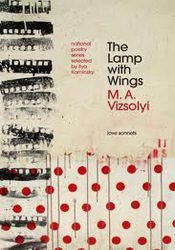
Love puts a lot of pressure on people to do things with each other. There are a lot of conditions to saying “I love you.” You have to act love out in the world, and it’s a big world, especially if you’re trying to make sure it understands how you are right now in love with this person. Maybe you should celebrate the world, even while you’re only really celebrating each other. Because love is a moving target. And it’s dysfunctional. Love is like a really long Terms of Agreement that’s still being written even after you decide your username and password. It’s probably doing multiplication when we’re not looking.
Maybe that’s why the sonnet was invented–because people decided they would make an opposing mathematics to love. They would present love like it was an argument, or a paradox, or an exclamation, or some combination of these. If love is confusing, the sonnet would turn around and say ‘confusion is orderly.” Which makes the sonnet sound like Mr. Belvedere. It’s not, really, though it wouldn’t hurt to have a touch of Mr. Belvedere’s vinegar accent while you’re reading a good sonnet.
If you’re reading M. A. Vizsolyi’s love sonnets, I might suggest putting on a bowler hat (admittedly, Mr. Belvedere never wore a bowler hat), if only to give you a touch of René Magritte. Because for Vizsolyi, all the confusion and dysfunction of love is just so natural. And if the sonnet tradition commemorates the chase after love, Vizsolyi tilts the whole scene 45 degrees, and writes sonnets that are in the pursuit of a language for love. For “[love] misuses metaphors / & is tied together only loosely / by bleak words” or “there is a logic to love i told / her if 2=5.” Ah love, so elusive, even to a poet. Perhaps this is why Vizsolyi scrambles his syntax, to catch love off guard. His surreal anacoluthons follow one another so closely, so insistently, each poem is a tumbling game where syntax and language easily fall into various complementary meanings.
It might be why The Lamp with Wings, separated into four different sections, touches on four different times in the life of love. From love’s uncertain but inexplicably resolute beginnings in part I to love’s comfortable sustenance in part IV, Vizsolyi is into this love thing. He is in ardent pursuit. Might he catch it in the language of jubilant surrealism, for the beginning of love, when “smiling joy / recurs between the legs of lovers”? Or might Vizsolyi resort to the more dejected, Max Beckmann-ish surrealism, when love is sustaining, where “walking into the woods was / the empty street; our love in the waiting / room”?
 Yet for all the playfulness in Vizsolyi’s poems, the love he writes for is that long term kind, filled with commitments and doubts and constant renewals, I would venture to say Vizsolyi’s sonnet cycle actually provides the tradition a welcome 21st century update, at least in that sonnet strain of the enthusiastic lover. And I’m not just talking about a 21st century, metrosexualish male who is honest about looking at women wearing tank tops in spring and keeping his pubic area trimmed. These poems are the story of an early 20’s male who falls in love, relishes that love, proposes co-habitation with that love, then lives with love. Reading these, you get the feeling they are personal poems, and they chronicle the very real evolution of a love Vizsolyi is living through, a fact which adds some extra sharpness to the joy, and maybe an extra wet blanket when it comes to the last section.
Yet for all the playfulness in Vizsolyi’s poems, the love he writes for is that long term kind, filled with commitments and doubts and constant renewals, I would venture to say Vizsolyi’s sonnet cycle actually provides the tradition a welcome 21st century update, at least in that sonnet strain of the enthusiastic lover. And I’m not just talking about a 21st century, metrosexualish male who is honest about looking at women wearing tank tops in spring and keeping his pubic area trimmed. These poems are the story of an early 20’s male who falls in love, relishes that love, proposes co-habitation with that love, then lives with love. Reading these, you get the feeling they are personal poems, and they chronicle the very real evolution of a love Vizsolyi is living through, a fact which adds some extra sharpness to the joy, and maybe an extra wet blanket when it comes to the last section.
Poor love. It never knew what it was in for when Vizsolyi took on the assignment. Love is careful and kind and it can make you feel like complete and utter crap. And so these poems in pursuit of love are camouflaged in that ungrammatics that is now a mainstay in contemporary American poetics. Only a fool would consider measuring out love, like with a yardstick or a stopwatch, especially when love is always making you think you’re starting again like it was brand new. Like that love from before is so two words ago.
Love is bounty. And lovely to relish. And surreal. And apparently it’s what it feels like when love is at the tip of your tongue. The Lamp with Wings is a celebration, an apology, and a healthily problematized succor.




